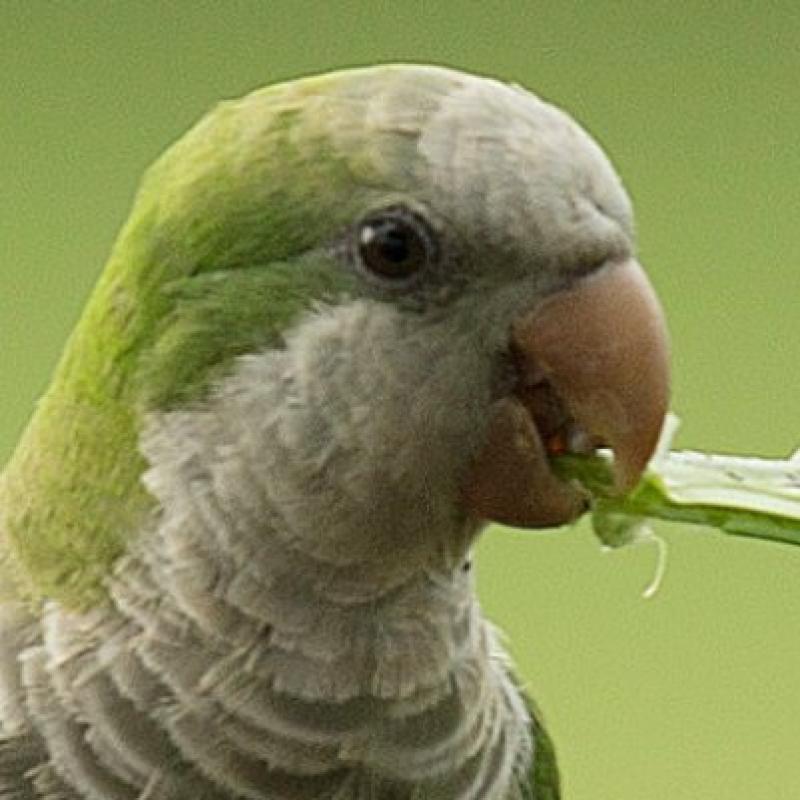Feral Parrots Are Taking Over America




The United States was home to just two native parrot species, the Carolina parakeet (now extinct) and the thick-billed parrot (now only found in Mexico). But that doesn’t mean Americans don’t have plenty of opportunities to see free-flying parrots. As new research describes, there are 56 parrot species living in the wild across 23 U.S. states. Of those, 25 species have formed breeding colonies.The Migratory Bird Treaty Act makes it illegal to own any bird (or any part of a bird) from a list of hundreds of native species. Instead, the pet trade, both legally and illegally, imports exotic bird species like parrots—and inevitably, some of these birds escape and occasionally breed. All of the parrots documented in this research, with two possible exceptions, descended from escaped pets.
A team of scientists, led by Cornell graduate student Jennifer Uehling, reviewed parrot observations from 15 years of community science observations—specifically, the annual Christmas Bird Count and Cornell University’s ubiquitous eBird database. Birders log their sightings along with comments, and reviewers confirm any rarities with more details, further observations, and photos. The researchers determined that a bird population was “established” if birdwatchers had observed the species 25 or more times (a purposely high but relatively arbitrary number) and if records included observations of breeding.

Monk parakeets in Chicago.
Jennifer Uehling
This is community science data, so it’s worth looking skeptically at some of the observations. But still, that’s a lot of parrots.
How do parrots survive in a foreign habitat? The researchers explain that monk parakeets can build their nests in natural or human-made structures, adjust their diets to survive in the cold, and can establish new populations far away from where they were born. They’re particularly good at surviving in human-altered habitats. The researchers note that density of humans and the minimum January temperature have the biggest impact on the diversity of naturalized parrots—which is why it shouldn’t be surprising that southern Texas, southern Florida, and southern California have the most parrots.
But should these colorful colonies be celebrated or removed, given that the birds are invasive? Eradication efforts are occasionally met with resistance from bird lovers, and proposed laws in some states, including New York and New Jersey, would further protect monk parakeets, according to the new paper. The red-crowned Amazon is red-listed by the International Union for Conservation of Nature in its native range, and might receive similar protections in the United States.
For now, the answer is that scientists need to do more science, and establish what effects, if any, parrots have on native species (for now, there’s no evidence either way, according to the paper). But it’s clear that humans alter their environments in ways you might not expect, such that animals from around the world have now established populations far from their home ranges.
Initial image: Monk parakeets in Cooper City, Florida. J Pat Carter (AP)








We should allow them to proliferate.
After all... all those coyotes now installing themselves in urban/suburban settings will need prey...
Sounds like the birds may be adapting better than the coyotes. People will feed the birds.
Well... the coyotes can always count on the pigeons.
Yeah, but aren't a lot of them inner cities pigeons diseased?
The ones I see look fat and happy.
The United States was home to just two native parrot species, the Carolina parakeet (now extinct) and the thick-billed parrot (now only found in Mexico).
Perhaps if we had THE WALL we might have kept the thick-billed confined to our shores ( in truth we would need a dome). Sorry Bob it was low hanging fruit.
We have them around here. You can hear them coming because they are the talkiest birds in the air. I found them entertaining but last year they ate every last plum off my tree (it's not a real big tree) in the space of about an hour.
Did they say "Thank you"?
Manners are dead. You'd think with all the talking a parrot can do, one of them would learn "please" or "thank you."
That would be the least they could do.
My sister actually owns a monk parrot. They are tough feisty little birds. They don't tend to bother other birds habitat like the most unwanted starling, that was brought here from Europe. I say let them be... even if my sister's bird just took a nice chunk out of my hand on Sunday. I won't take it personally, LOL!
Hitchcock!
Belmont Shore (Long Beach) in Southern California has had parrots for decades...When I lived in the area we'd have lunch or dinner on 2nd St and you could hear them nosily having a great time.
Cool
Thousands of feral parrots live in San Francisco, primarily on Telegraph Hill.
Thousands of feral parrots live in San Francisco, primarily on Telegraph Hill.
They must be hippie parrots!
Internet zillionaires...
The feral parrot's of St. Petersburg
They appear too be doing just fine!
Parrot in my neighborhood, central Florida, Marion country.
Well, most place have their native bird populations-- Robins, Blue Jays, Cardinals, Sparrows, Owls in more rural areas, etc. It would seem strange to see Parrots in northern states like Minnesota or North Dakota-- or Vermont or New Hampshire. But even though they might not be indigenous in warmer states, I don't think it would be too strange to see parrots flying around in places like southern Florida. (After all they are tropical birds).
Perhaps a state might choose a "state invasive bird"...
Everybody better stock up on.......
They could get belligerent if you don't satisfy them when they ask for them.